Your electric tuk-tuk fleet loses money every minute it's charging. This downtime hurts delivery schedules and profits. We will help you choose the best refueling strategy for your business.
For most operators, on-board charging is better due to its simplicity and zero extra cost. However, for high-intensity commercial fleets where uptime is critical, swapping batteries at your own depot is superior. The best choice depends entirely on your business model.
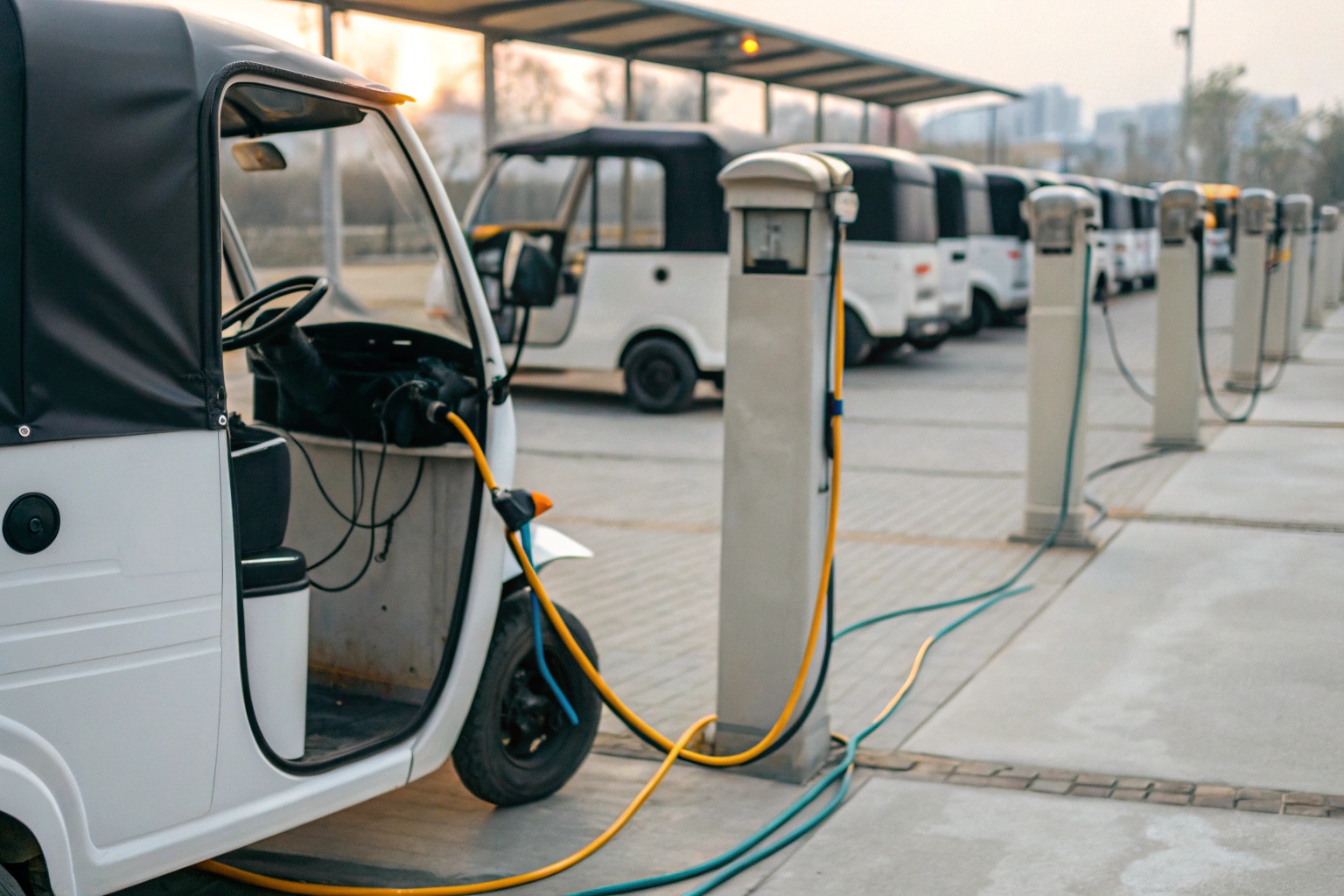
I get this question almost every day from clients. They want to know the "best" way to power their new fleet of electric tricycles. The truth is, it’s not about finding a public charging or swapping station. The real decision is how you manage energy at your own place of business. Do you plug the whole vehicle in and wait, or do you have spare batteries ready to go? Let's break down these two practical strategies.
How Does Battery Swapping Improve Downtime for Electric Tuks?
Your drivers sit idle for hours while vehicles charge. This wasted time means lost deliveries and lost revenue. There is a way to get them back on the road instantly.
Depot battery swapping slashes downtime by letting drivers swap a depleted battery for a pre-charged spare one at your operational base. This manual swap takes just a few minutes, keeping your electric tuk-tuks operating almost continuously and maximizing profit.
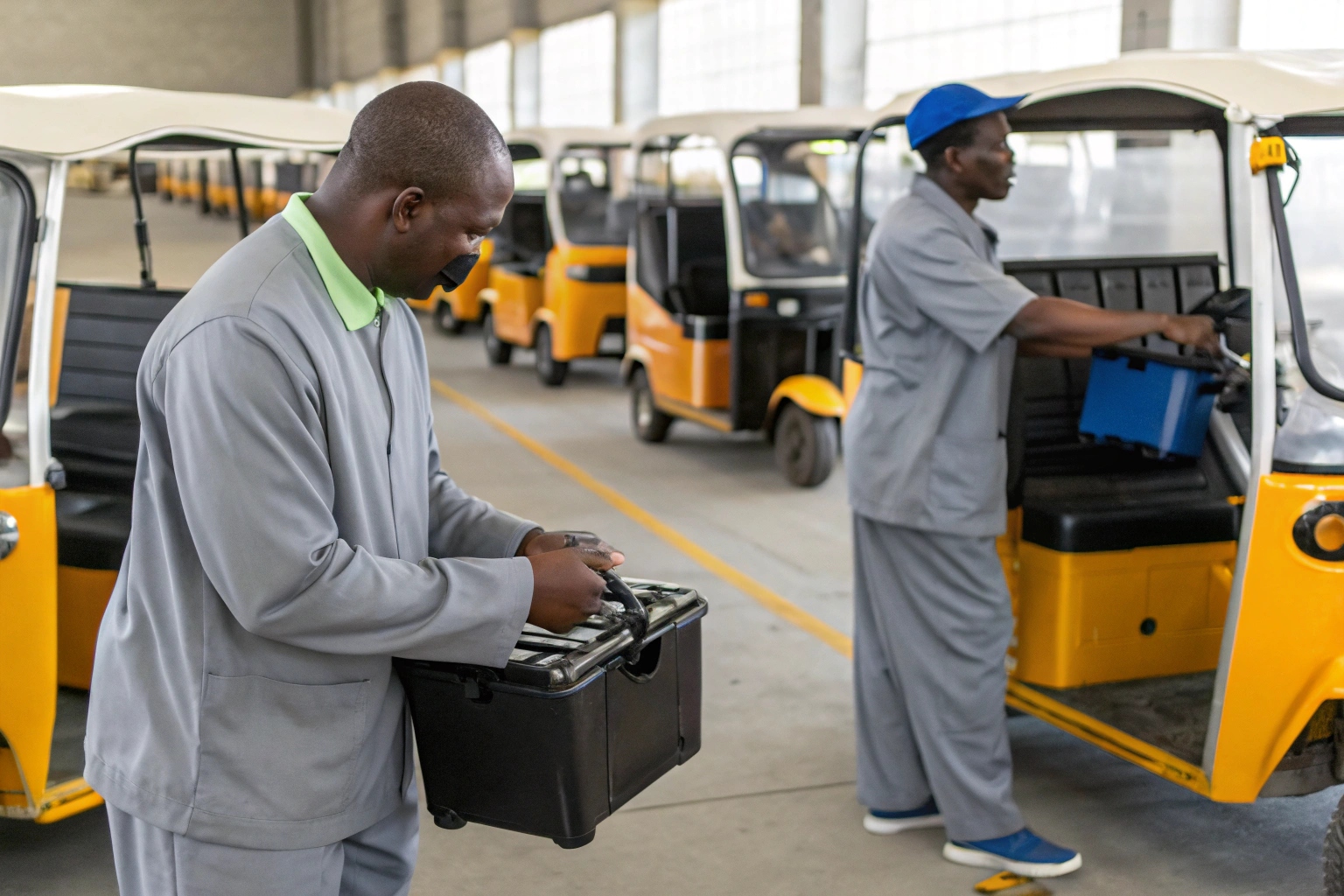
Forget the idea of expensive public swapping stations. The model we see working for our clients is much simpler. Imagine you run a small courier fleet. You have 10 electric tricycles and you buy 15 batteries. The 5 spare batteries are always charging on a simple rack in your warehouse. When a driver returns mid-day with a low battery, they just swap it for a fully charged one. The process takes less than five minutes. That vehicle is now ready for another full shift. For our clients in last-mile delivery, this is a game-changer. They can run their vehicles for 18 hours a day, effectively doubling their revenue potential per vehicle compared to waiting for an 8-hour charge.
- Drastic Downtime Reduction: It cuts refueling time from hours to minutes.
- Simple Setup: All you need is a safe place to charge your spare batteries.
- Increased Operational Efficiency: More uptime means more deliveries and more revenue.
What Are the Key Advantages of On-Board Charging for Electric Tuks?
You want the simplest, lowest-cost solution. You don't want to manage a stock of spare batteries. The easiest solution is often the most effective one.
On-board charging is the definition of simplicity. You just plug the electric tuk-tuk directly into any standard wall outlet. It requires zero extra investment in batteries and is the perfect, straightforward solution for businesses with predictable daily routes.
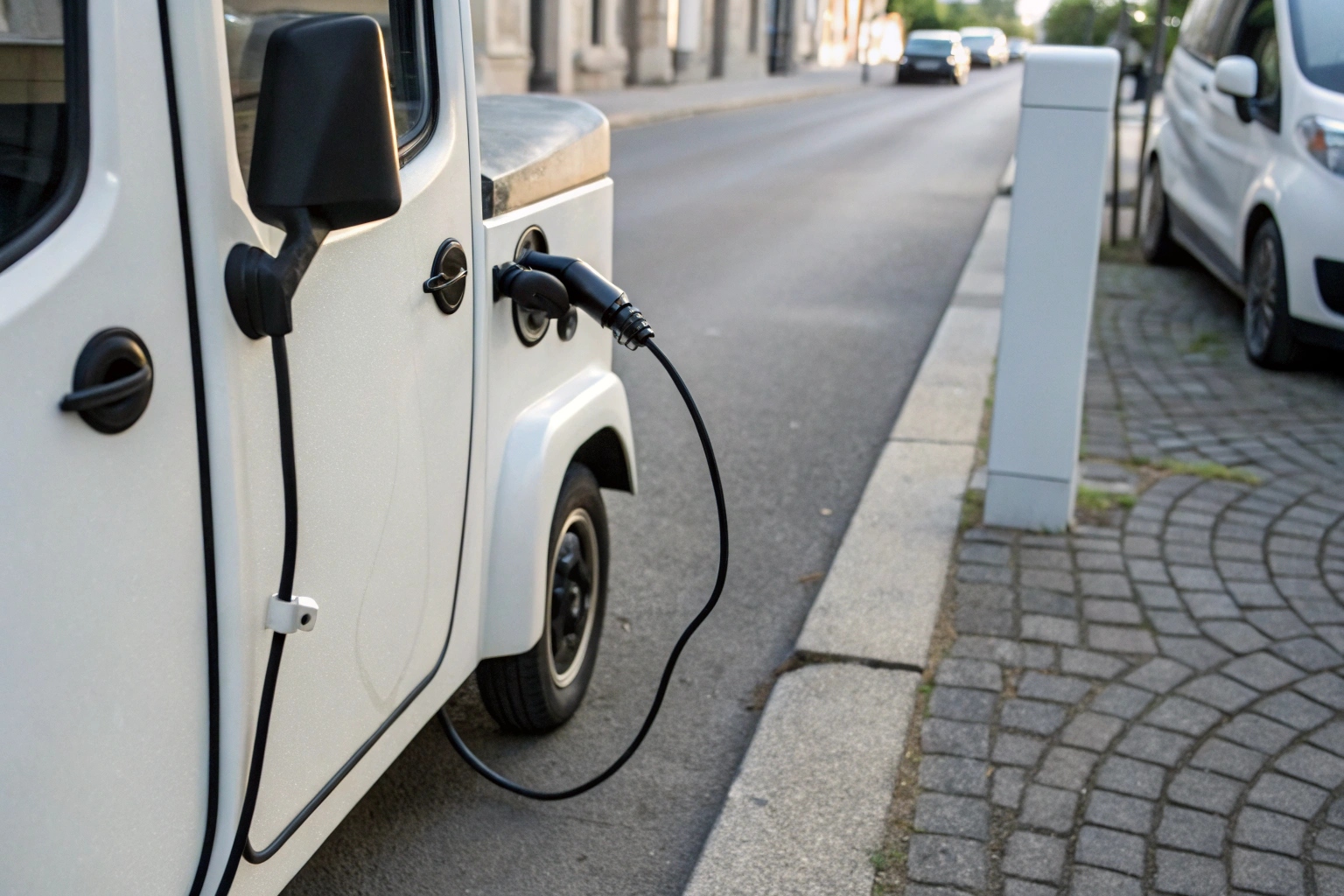
This is the most common method for a reason. It’s easy and it works. You finish your day, you plug the vehicle in, and it’s ready to go the next morning. I recently worked with a group of farmers in Peru. Their daily route to transport crops to the market is around 60km. We equipped their electric cargo tricycles with a larger battery that gives them a 150km range. They have no need for battery swapping. They simply charge the entire vehicle overnight. For them, buying, storing, and swapping heavy batteries every day would be an unnecessary expense and complication. If your daily operations don't exceed the range of a single charge, on-board charging is the most logical choice.
- Ultimate Simplicity: No extra equipment or batteries to manage. Just plug and charge.
- Zero Additional Cost: You don't need to buy expensive spare batteries.
- Perfect for Predictable Routes: Ideal for operations where one charge is enough for the entire day's work.
Which Charging Option is More Cost-Effective for Electric Tuk Fleets?
The wrong energy strategy can hurt your budget. You need to look at the full picture: the cost of equipment versus the cost of lost business from downtime.
On-board charging is the most cost-effective solution initially because it requires no extra purchases. Depot swapping has a higher upfront cost for spare batteries but becomes more profitable for high-use fleets because it maximizes vehicle revenue.
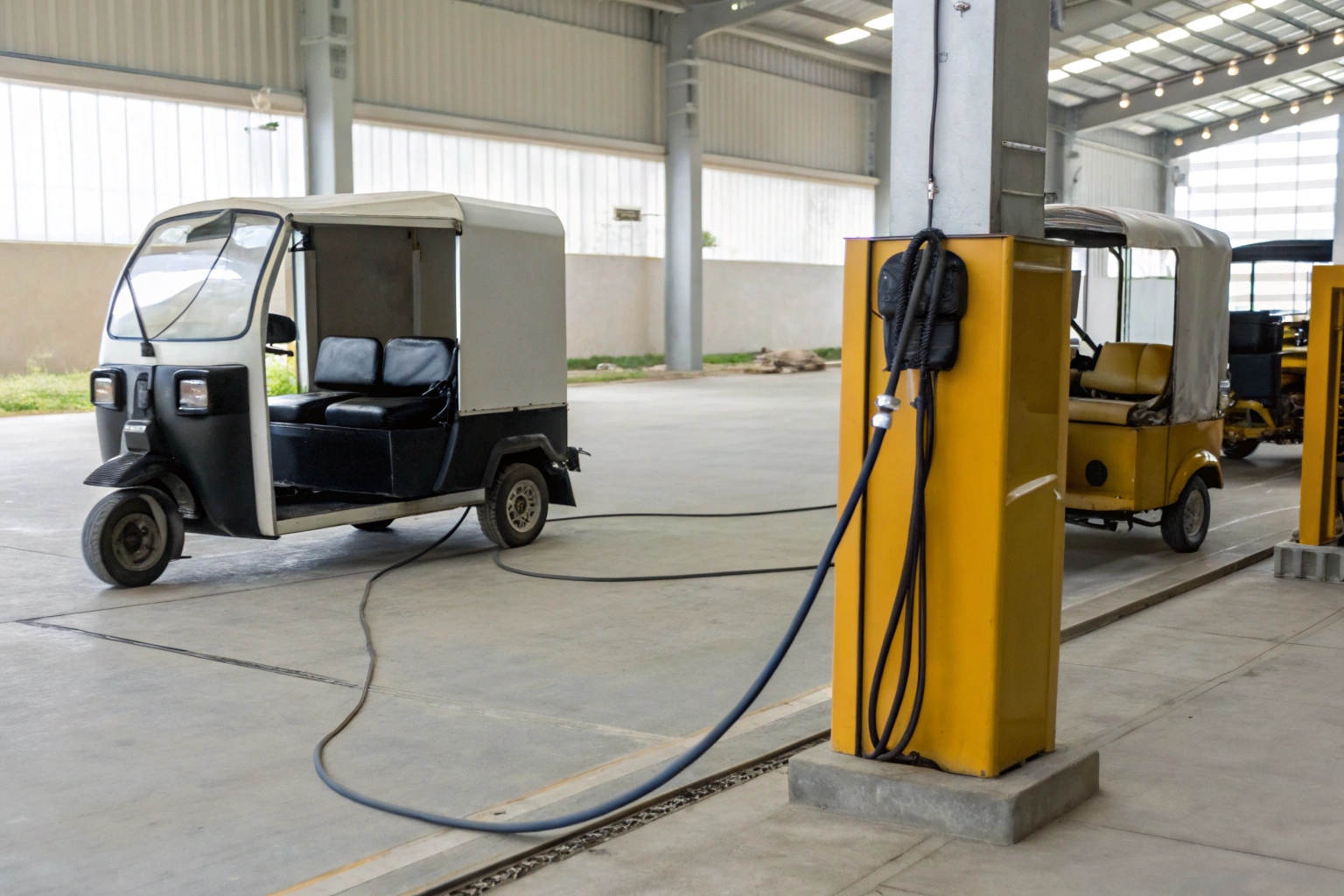
Let's do the math. The main expense for depot swapping is buying extra lithium batteries, which are not cheap. For on-board charging, there is no extra cost. So, if you only look at initial investment, on-board charging wins easily. However, you must consider the Custo total de propriedade (TCO) and your revenue potential. If an electric tricycle generates $50 in profit per day but sits idle charging every other day, its earning potential is halved. Buying a spare battery might cost you upfront, but if it allows that vehicle to work every single day, it pays for itself very quickly.
| Fator | Depot Battery Swapping | On-Board Charging (Wall Outlet) |
|---|---|---|
| Initial Cost | Medium (Cost of spare batteries) | Zero |
| Complexity | Higher (Manage battery inventory & charging) | Very Low (Plug vehicle in) |
| Vehicle Uptime | Very High (Almost 100%) | Low (Limited by charge time) |
| Melhor para | High-intensity, multi-shift operations | Single-shift, predictable routes |
How Can You Set Up a Practical Battery Swapping System?
You're interested in swapping, but worried it might be complicated. How do you make it easy and safe for your employees to handle heavy batteries every day?
A practical swapping system starts with a good vehicle design. As a factory, AGL-Trike can customize our electric tricycles with a slide-out battery tray, making it easy for anyone to swap batteries without heavy lifting, ensuring a safe and efficient process.
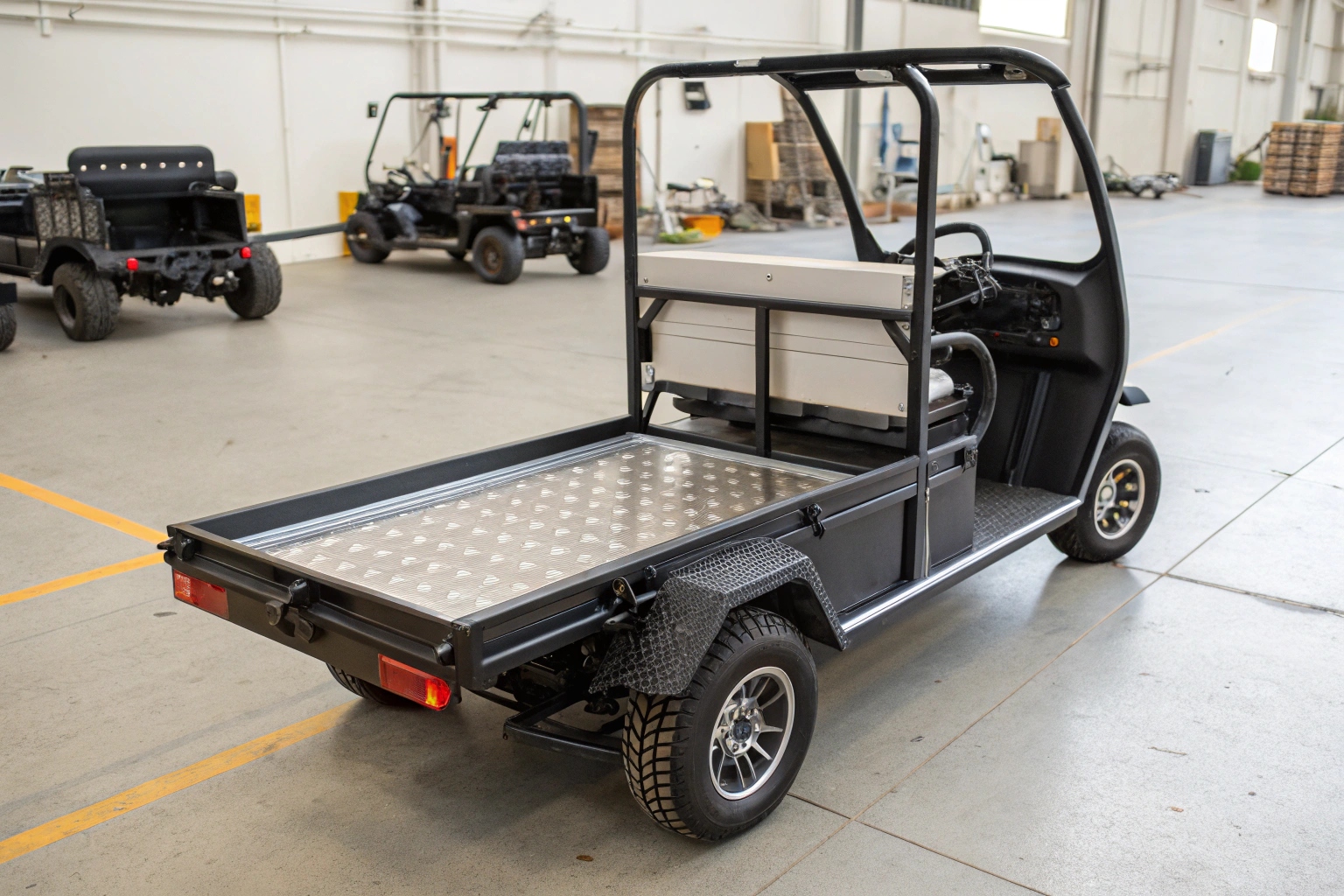
Setting up a swapping system at your depot is straightforward: designate a safe area, install a simple metal rack, and get enough standard chargers for your spare batteries. The biggest challenge isn't the charging; it's the physical act of moving the battery. They can be heavy and awkward. This is where working directly with a factory like ours makes a huge difference. We understand this challenge. For clients who need a swapping solution, we can design and build the battery compartment with a slide-out rail system. The battery sits on a tray that you can simply unlock and pull out. You slide the new one in, lock it, and you're done. This customization makes the entire process quick, safe, and efficient.
Conclusão
The best choice is about your business needs. On-board charging is simple and cost-effective for predictable, single-shift work. Depot battery swapping is the key to maximizing profit in high-intensity operations.

